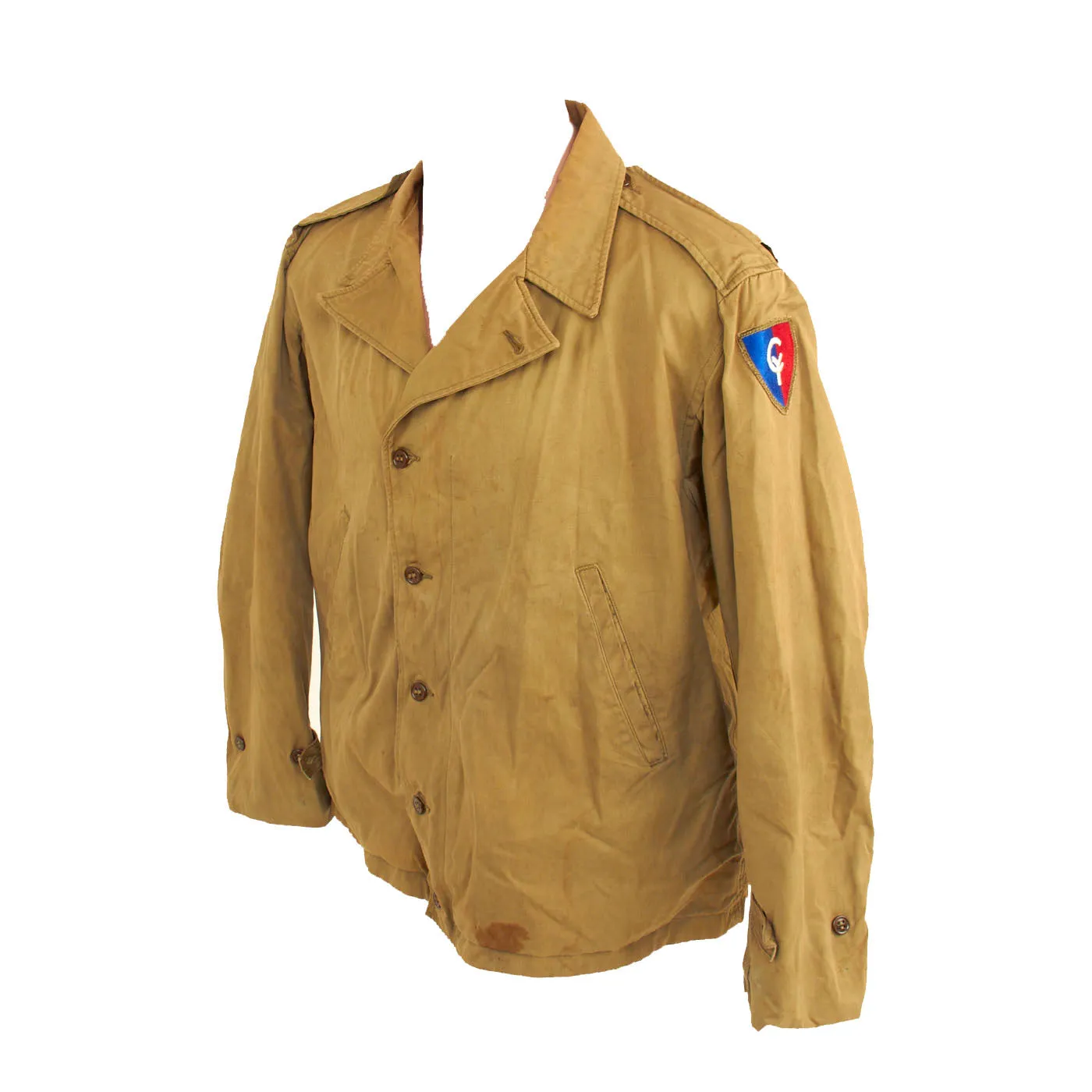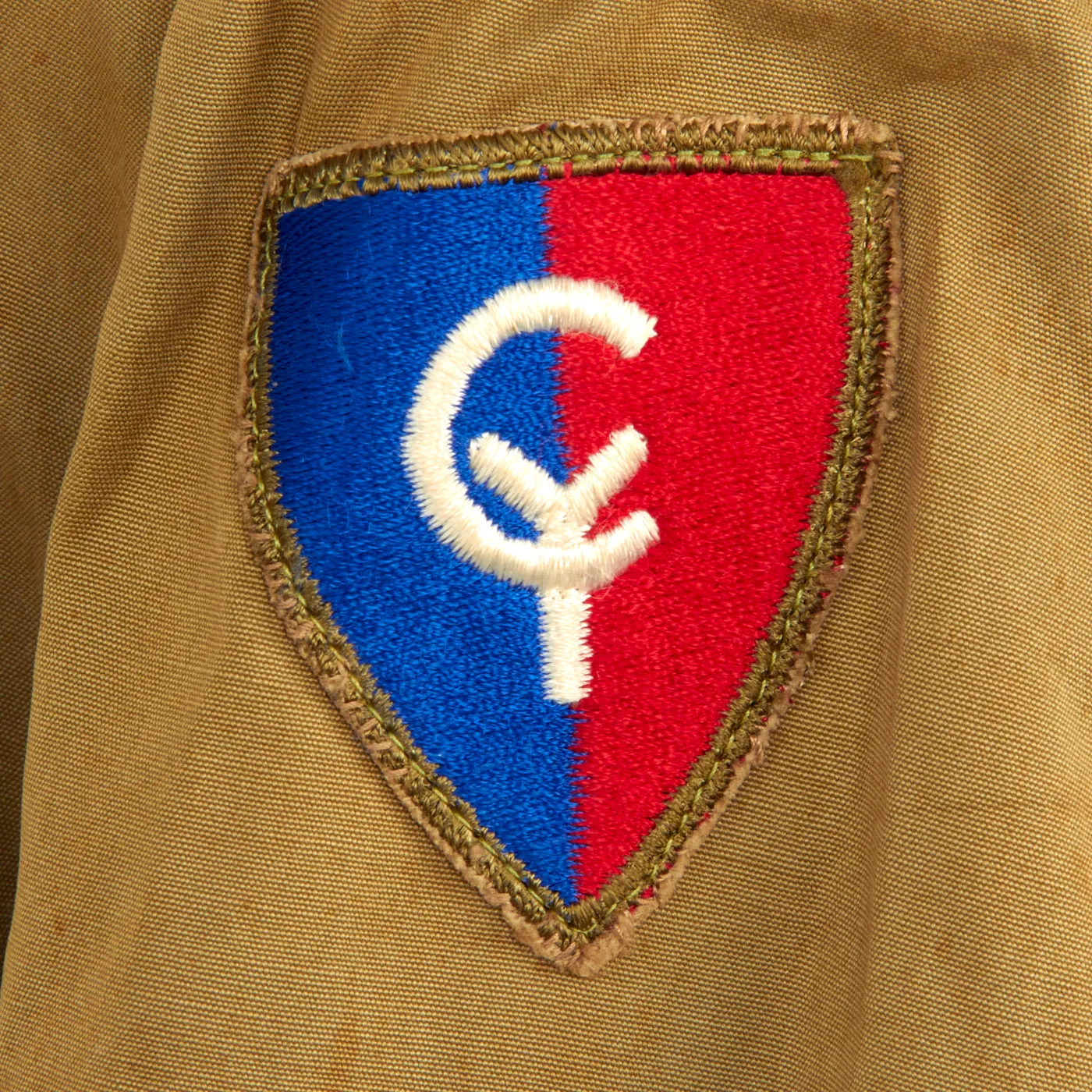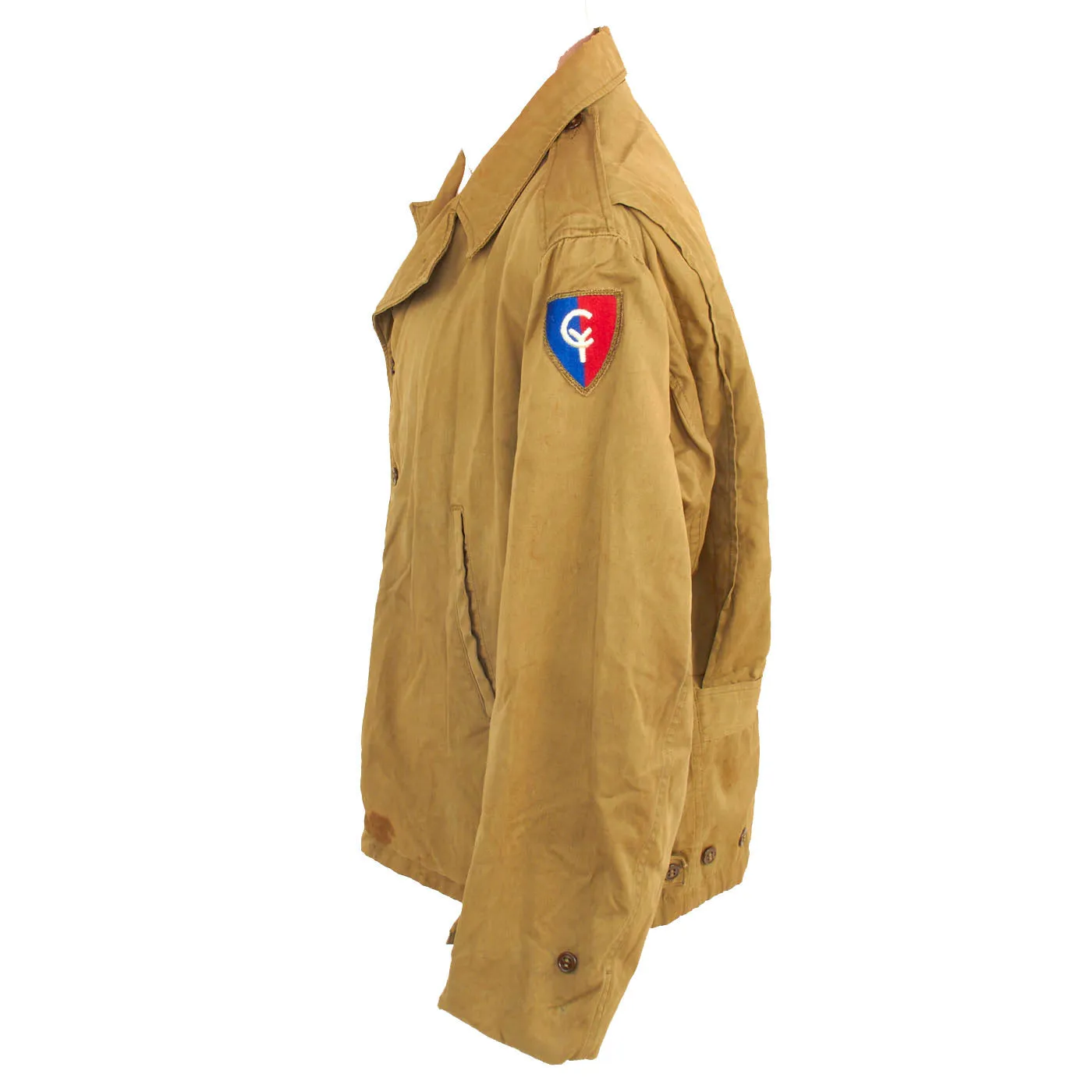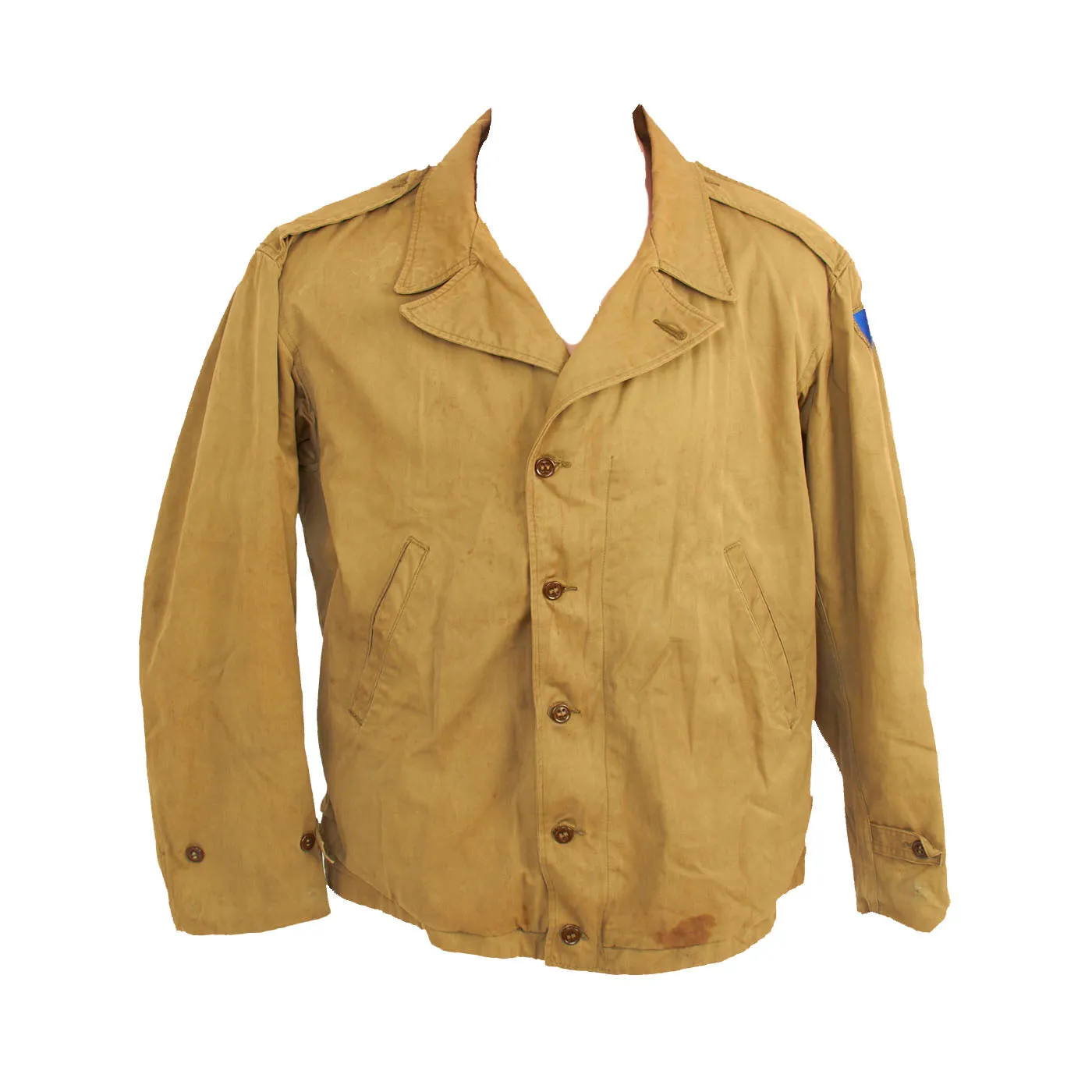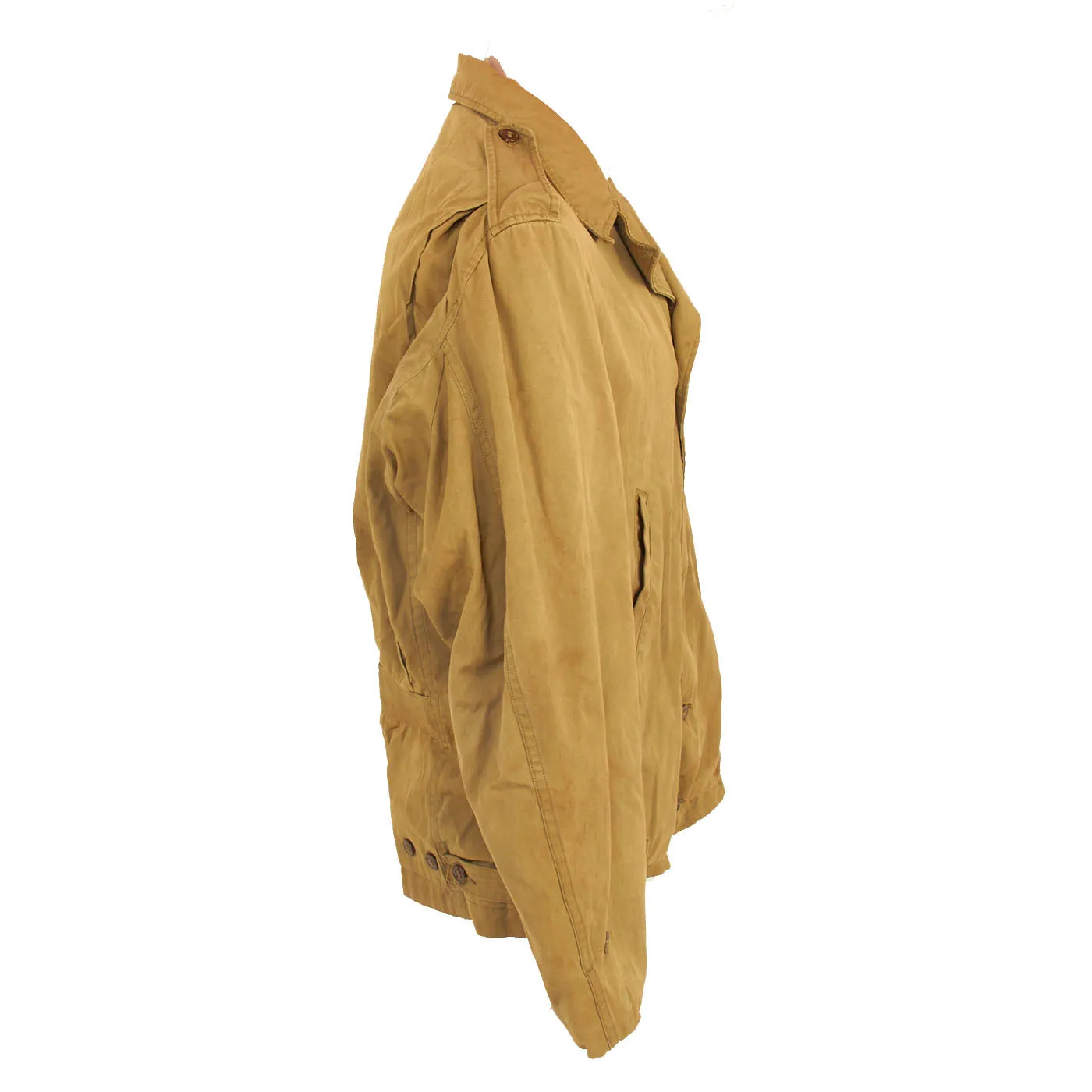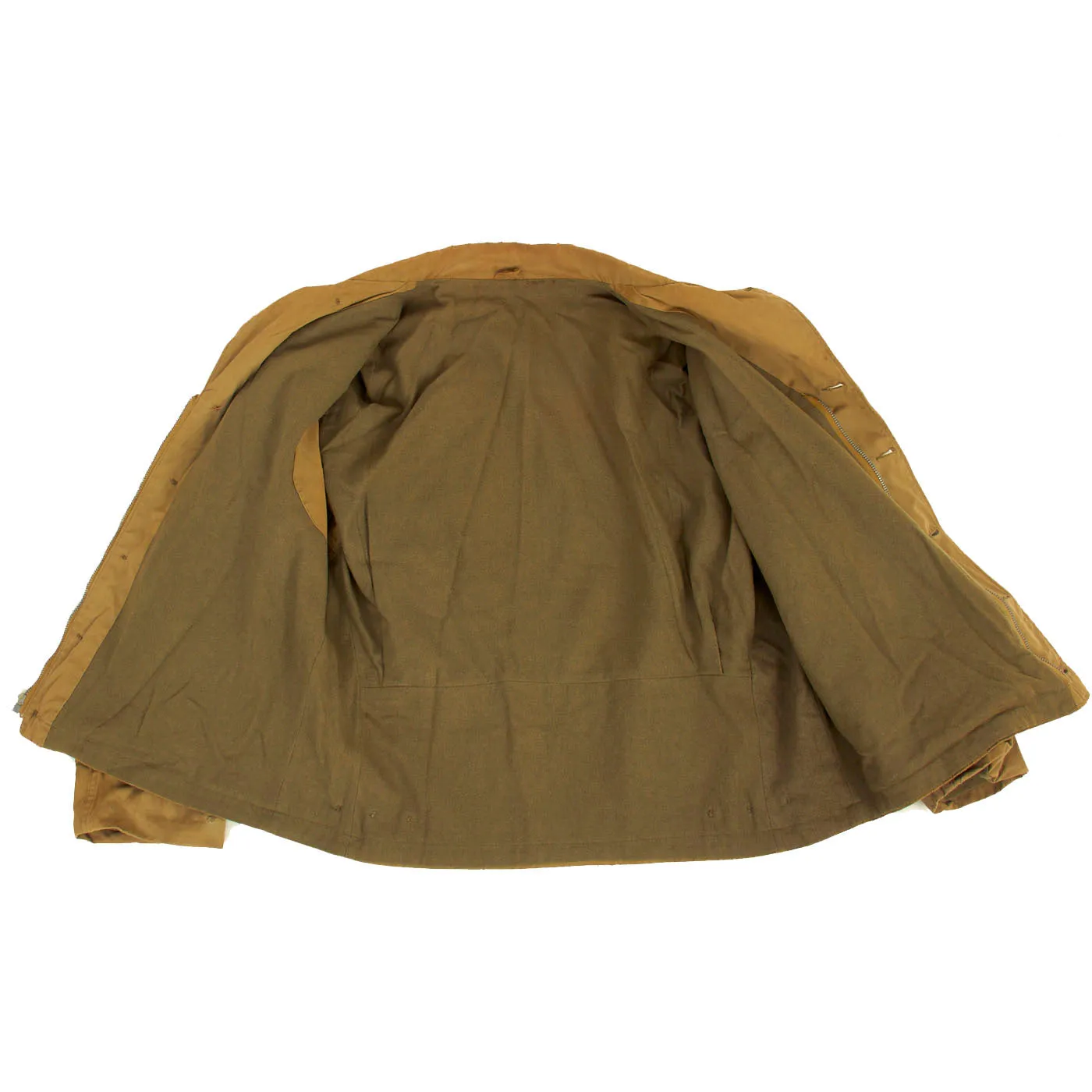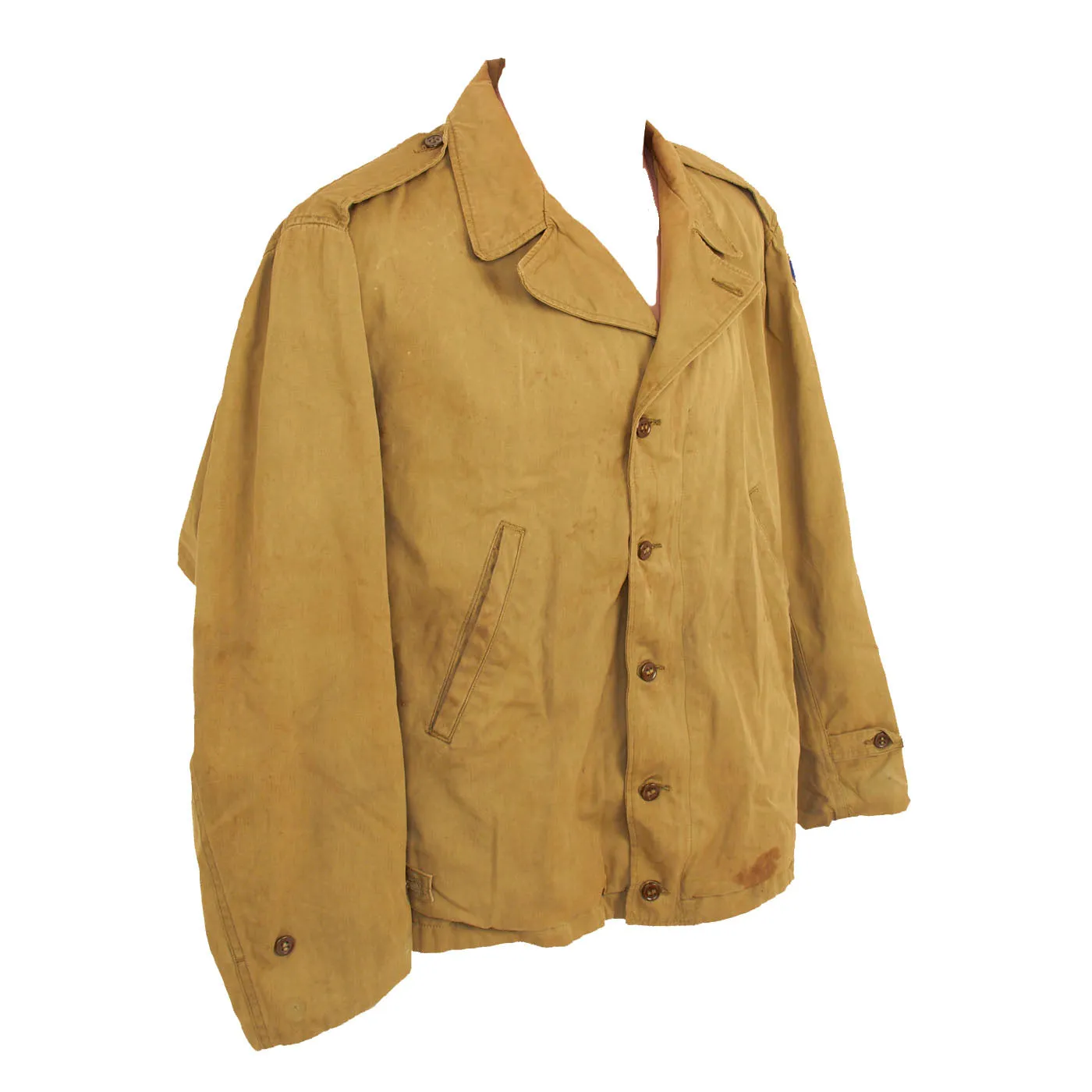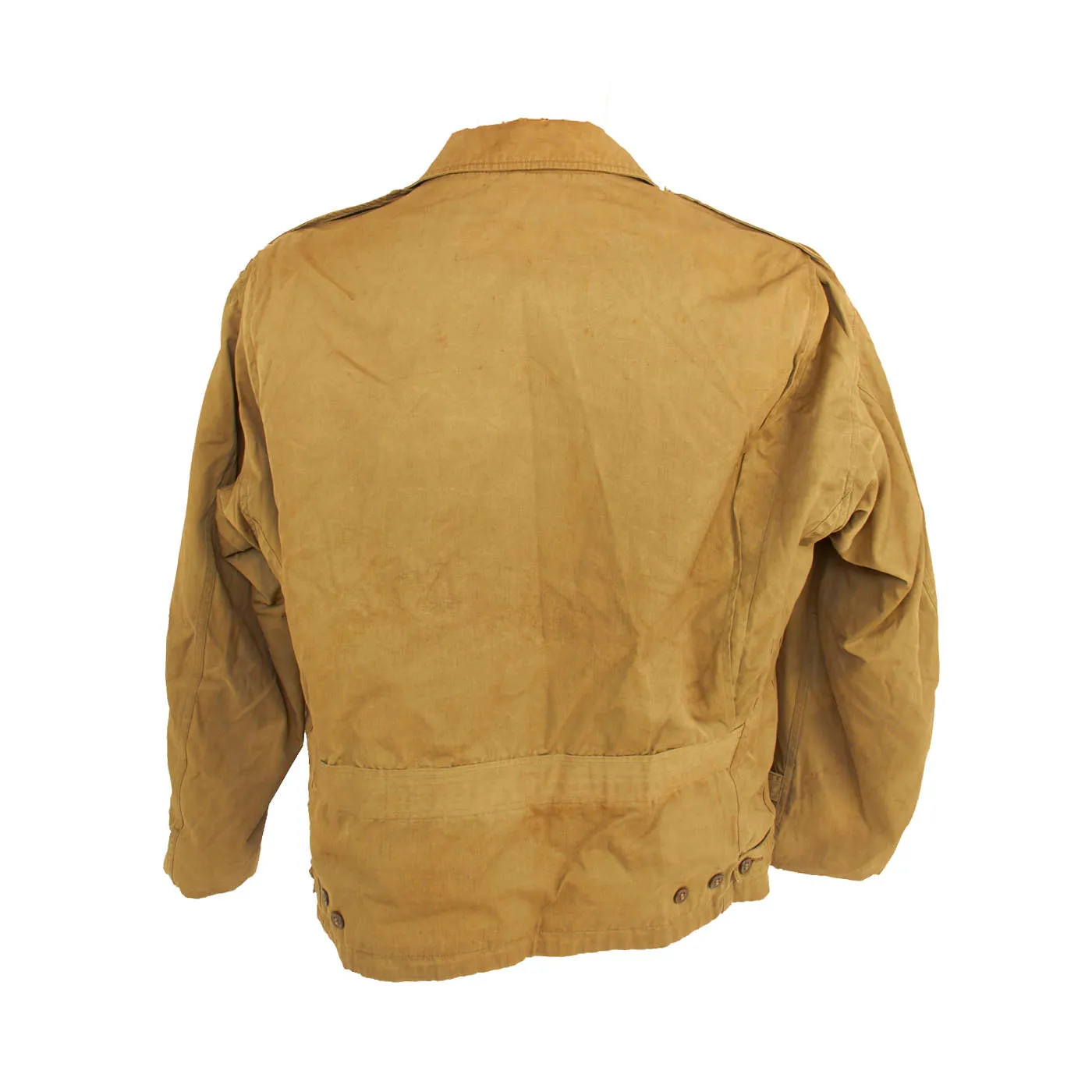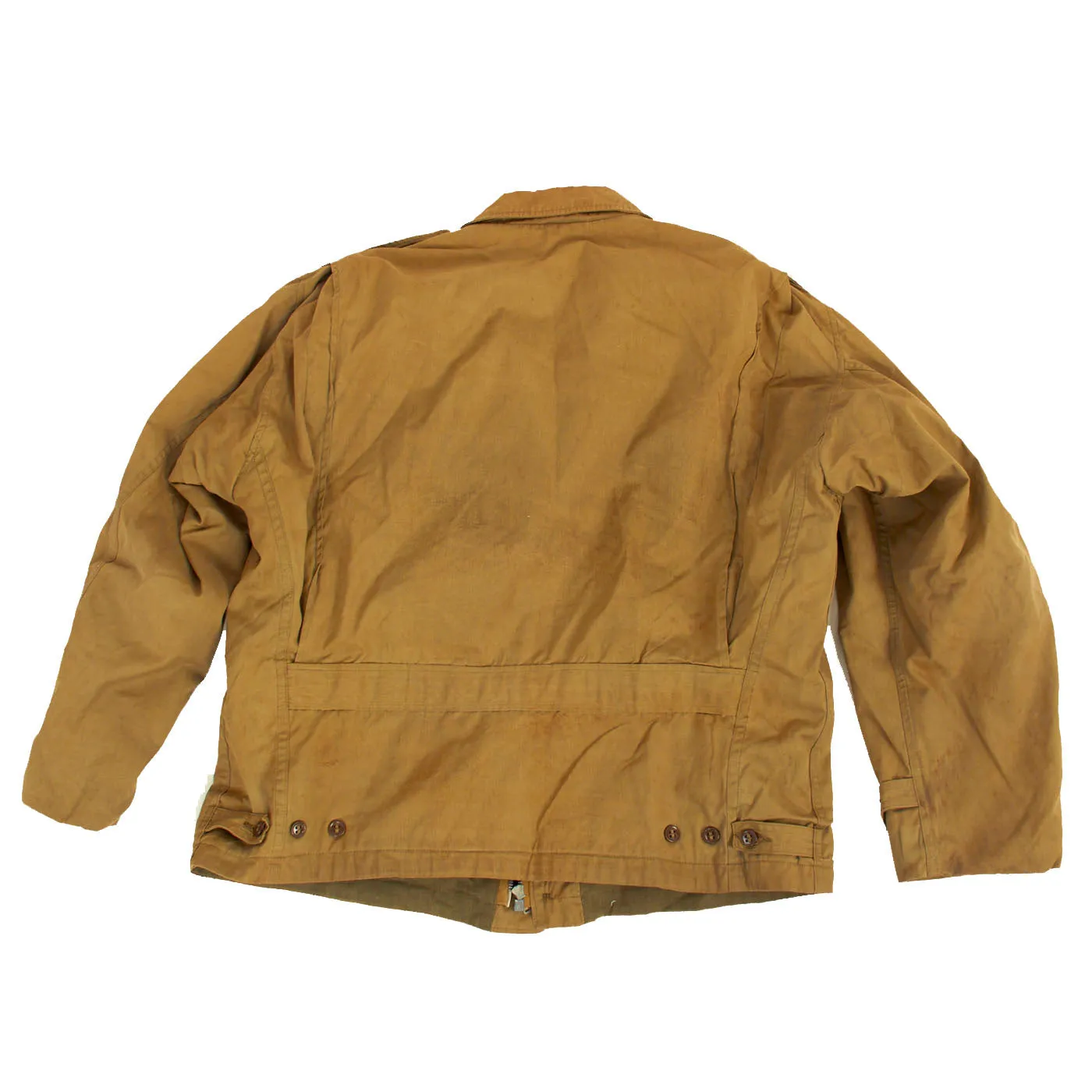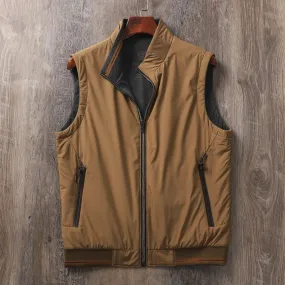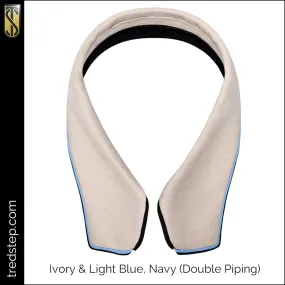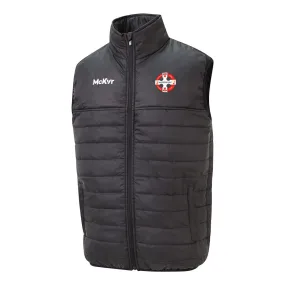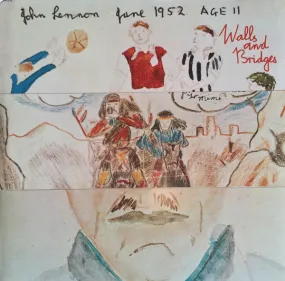Original Item: Only One Available. This is a lovely example of a “Jacket, Field, O.D.” which features a vibrant 38th Infantry Division insignia on the left shoulder. The division's shoulder sleeve insignia (SSI) is a spade shaped shield, bordered in green, with the right half red, the left half blue. Superimposed on the shield is a white monogram "CY" which alludes to the divisional nickname "the Cyclone Division." The distinctive unit insignia (DUI) is in the shape of a clover leaf in memory of the original badge for non-color bearing divisional units. The lightning flashes represent the unit's participation in three World War II campaigns, with the Luzon assault landing recognized by the arrowhead tip in the center flash. The cloud and lightning flashes are an allusion to the cyclone. The colors blue, white and red refer to the Philippine Presidential Unit Citation awarded to the unit for their part in liberating the country.
The Jacket, Field, O.D. (also unofficially known as O.D. Cotton Field Jacket, Parsons Jacket, or M1941) is a field jacket that was used by US Army soldiers, most famously during the beginning of World War II. In 1941 it started to be phased in as a replacement for the wool four-pocket service coat of World War I, but around 1943 it was replaced in turn by the improved M1943 model. Owing to wide adoption, the M1941 is usually recognized as a symbol of the World War II American G.I. The jacket was made in a light shade of olive drab called O.D. number 2.
This example is in wonderful, moderately used condition without any extensive damage or wear present. There is minor staining to the exterior, but that just adds to the beauty of it!
Comes more than ready for display.
The 38th Infantry Division arrived in Hawaii on 17 January 1944. It received further training and the duty of the defense of Oahu. The division embarked from Hawaii to New Guinea, where the combat elements conducted final combat rehearsals (made realistic by the presence of bypassed Japanese troops) from July to November 1944. Once rehearsals were complete, the 38th Infantry Division sailed for Leyte, landing in December 1944. Enemy paratroops attempted to capture the Buri, Bayug, and San Pablo airstrips on 6 December. The 149th Infantry Regiment destroyed organized resistance, 11 December, and defended the strips until relieved, 4 January 1945. The division landed in the San Narciso area in Southern Zambales Province, Luzon, 29 January 1945, without opposition. The San Marcelino airstrip was secured on the same day and the port facilities at Olongapo were captured on the 30th as well as Grande Island in Subic Bay after an amphibious landing. Driving west of Olongapo the 38th destroyed an intricate maze of enemy fortifications in Zig-Zag Pass. While elements landed at Mariveles on the southern tip of the peninsula, 15 February, other units pushed down the east coast road to Pilar and across the neck of land to Bagac along the route of the March of Death. The Bataan Peninsula was secured on 21 February, although mopping-up activities remained. The 38th Infantry Division's rapid drive across the peninsula was critical to MacArthur's campaign plan by preventing a Japanese withdrawal into Bataan - thereby avoiding a costly siege operation.
2nd Battation of the 151st Infantry, along with elements from the Cannon and anti-tank companies, moved to Corregidor, 24 February, to clear the remaining Japanese defenders from the Rock. The same battalion assaulted and captured Caballo Island, 27 March, and Fort Drum on El Fraile Island, 13 April. 1st Battalion 151st Infantry captured Carabao Island on 16 April. Supporting operations in March included a major push against dug-in Japanese defenders in the mountainous terrain between Fort Stotsenburg and Mount Pinatubo by the 38th Division Advance (consisting of the 149th Regimental Combat Team (RCT), the 169th RCT, and all the 38th Division's artillery). Once the enemy was broken, combat elements of the 152nd Infantry pushed north from San Felipe to Palauig Bay and east from Botolan along the Capas Trail cutting the enemy's withdrawal route.
The Division moved to the area east of Manila, 1 May, and attacked enemy forces behind the Shimbu Line. By 30 June effective enemy opposition had been broken, although the division remained engaged in active combat operations until 14 August 1945 when President Harry S. Truman announced Japan's acceptance of the Potsdam Declaration and unconditional surrender. As of 14 August 1945, the 38th Infantry Division had completed an unbroken stretch of 198 consecutive days in combat, officially killing 26,469 enemy combatants, and taking 1411 Japanese prisoners. Although officially not "engaged in major combat" after 14 August, elements of the division continued to mop up Japanese stragglers in the Luzon area (who usually resisted to the death), until the signing of the VJ Day surrender documents on 2 September 1945. Even after VJ Day, the division's combat outposts continued to net prisoners until the division was officially relieved on 5 October 1945. In the final tally, the 38th Infantry Division fought against more than 80,000 Japanese, killing 26,732 and ultimately taking more than 13,000 prisoners. For its swift clearing of the Bataan peninsula in 19 days of bloody combat, division commander Major General William C. Chase, ordered that the division would be known as the "Avengers of Bataan", a tribute often attributed to General Douglas MacArthur.




